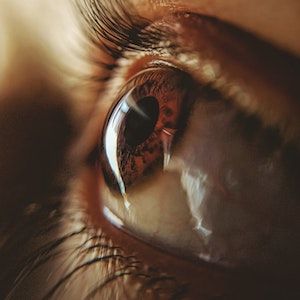Article
Subretinal Fluid May Protect Against Macular Atrophy in Eyes with nAMD
Author(s):
Five years of treatment follow-up in the Fight Retinal Blindness registry provided evidence that SRF protected against the development of subfoveal and extrafoveal macular atrophy.

New research yielded strong evidence that subretinal fluid (SRF) protected against the development of subfoveal and extrafoveal macular atrophy (MA) in eyes with neovascular age-related macular degeneration (nAMD) over a 5-year period.
Eyes that were mostly intraretinal fluid (IRF) had lower visual acuity (VA) at 5 years (54.5 letters), while mostly SRF eyes had better VA (63.7 letters) comparable with mostly inactive eyes (63.7 letters).
“Understanding the protective role of retinal fluid against MA, its tolerance in terms of visual acuity [VA] and, consequently, treating it in a more individualized and precise manner can provide better results in eyes with AMD,” wrote study author Jorge Sánchez-Monroy, Ophthalmology Department, Miguel Servet University Hospital.
A better understanding of the effects of different types of retinal fluids may have implications for treatment protocols, particularly for nAMD. There is interest in the relationship between the role of retinal fluid and the development of MA and subretinal fibrosis which is strongly associated with poor long-term visual outcome in eyes treated with nAMD.
Meanwhile, the presence of SRF has been associated with lower development of MA and better VA outcomes in these patients, while IRF has been associated with higher rates of MA, lower baseline VA, and delayed response to treatment.
Sánchez-Monroy and colleagues set out to analyze the risk of development MA and SF according to the activity of the macular neovascularization (MNV [inactive, only SRF, only IRF]) over 5 years in routine clinical practice of eyes with nAMD. Data were collected from the Fight Retinal Blindness! (FRB) registry tracking clinical outcomes of patients with nAMD.
The investigators identified treatment-naive eyes with nAMD without extrafoveal/subfoveal MA or SF at baseline. They included eyes starting with anti-VEGF treatment between January 2010 and September 2016 to allow the possibility of a 5-year treatment follow-up period. The eyes were classified based on their predominant activity status as: mostly inactive, mostly IRFL, or mostly only SRF.
Mixed-effects Cox proportional hazards models were used to calculate hazard ratios (HRs) and to identify variables associated with the development of MA or SF, while Kaplan-Meier survival curves estimated the time to development of MA or SF.
Overall, 973 eyes from 851 met the inclusion criteria and were eligible for the analysis. Specifically, 442 eyes were considered mostly inactive, 280 eyes that were mostly IRF, and 251 eyes that were mostly only SRF over 5 years of potential follow-up. Baseline VA was worse in mostly IRF eyes (56.2 letters) compared with mostly only SRF (63.6 letters; P <.001) and mostly inactive eyes (61.7 letters; P <.001).
A total of 564 eyes completed 5 years of follow-up. The VA at 5 years remained worse in mostly IRF eyes (54.5 letters) than only SRF eyes (63.7 letters; P <.001) and mostly inactive eyes (63.7 letters; P <.001).
The data show eyes with only SRF were at a lower risk of developing MA (HR, 0.56; 95% CI, 0.36 - 0.88; P = .024) than IRF eyes. In addition, only SRF eyes had a lower risk of developing extrafoveal MA than mostly IRF eyes (HR, 0.41; 95% CI, 0.27 - 0.61; P <.001).
Investigators observed no difference in the development of subfoveal subretinal fibrosis between predominant activity status groups. However, they did find a higher rate of extra foveal subretinal fibrosis in mostly IRF eyes.
“It is essential to confirm in future studies not only the possible protective association of SRF and lower MA, but also to establish the ideal amount of SRF that could be tolerated to try to prevent the development of MA,” Sánchez-Monroy added.
The study, “Subretinal fluid may protect against macular atrophy in neovascular age-related macular degeneration: 5 years of follow-up from Fight Retinal Blindness registry,” was published in Acta Ophthalmologica.





